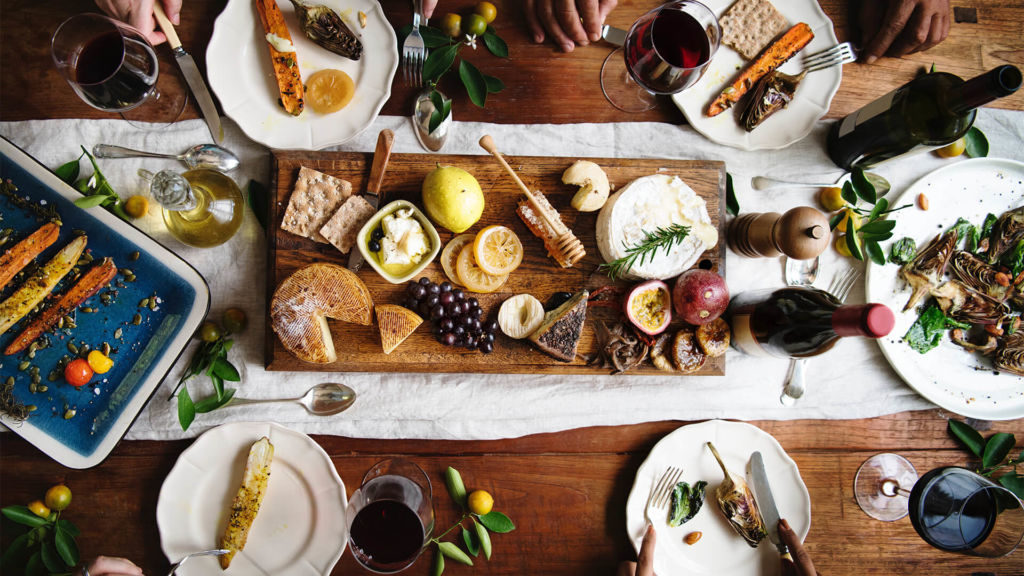Oui, it is the land of croissants, wine and the Eiffel Tower. With various movies and countless cooking shows portraying France as one of the culinary pioneers, we simply can’t help but marvel at the complexity and wonder of French cuisine.
With its rich history, French cooking is considered the basis and heart of many kitchens across the Western regions. As a matter of fact, a large portion of cooking was influenced by French chefs that have made a significant contribution to history.
The influence and acknowledgement of French cooking are legendary and is renowned for its elegance. The techniques used in French cuisine is taught in many Western cooking academies and cooking schools. Notably, Le Cordon Bleu in Paris, France, is the most famous and prestige culinary schools in the world.
The Evolution of French Cuisine
The start of French foods can be traced as far back as 1400 AD when the earliest French recipes mimicked Moorish cuisine. Sugar, which was considered costly at the time, was used as a sweetener for various dishes. Consuming alcoholic beverages was a custom that existed even back then, but the beer was more ubiquitous than wine.
During the 1540s, after the marriage of Catherine de Medici of Italy to King Henry II, she helped to refine French cuisine into original flavours and art. In the 16th century, there exist guilds which restricted the people of Paris to operate in specific culinary fields.
The guilds were segregated into two groups, where one provided raw materials, and the other supplied readied foods. French cooking was also primarily fostered by the royal patronage with popular dishes of fish and fruit. In that point in history, the art of champagne making was invented by Dom Pérignon as he stored wine in bottles which allowed for the process of second fermentation.
In 1644, coffee was introduced to France, and in 1666, croissants were developed which celebrated France’s victory in Austria against the Turks. The French revolution had a tremendous impact on food history in France as the guild system was abolished.
This gave people the freedom to make and sell any produce or food product. This led to chefs starting their own restaurants instead of the conventional pubs and taverns which were accessible to all. The 18th century brought about a novel journalistic lot, namely, food and restaurant critics.
Popular French Food and Pastries
1. Baguette
This crusty loaf is also known as “the French stick” and can be served as an appetiser or part of the main course. The crusty is essential because the crispness of the bread releases more scent particles when eating the bread.
A lesser-known fact is that there are three types of baguettes. Namely, the regular baguette, baguette moulée, and baguette farinée. The regular baguette is the standard golden-brown French bread that is most common. The baguette moulée (translated as moulded bread), is produced by industrial ovens. The baguette farinée is baked with flour on its crust.
2. Croissant
It is pastry that is buttery and flaky, made in the shape of a crescent. Most croissants are plain, but some have almond paste and chocolate fillings. The chocolate-filled croissants are referred to as “pain au chocolat” or “chocolatine.” Both terms are highly debated among those of the culinary scene. Croissants are usually served with jam or dipped into a bowl of coffee.
3. Ratatouille
It is a vegetable stew originating from Provence, a region of France. The dish is composed of aubergine, zucchini, tomatoes, onions, garlic, and various herbs. The ingredients can either be cooked separately then combined into the bowl or cooked together until they are tender.
4. Julienne with Mushrooms
This dish is actually a fusion of French and Russian cuisine. The dish mainly consists of mushrooms that are topped with a creamy sauce and is baked. The sauce is made by sautéing some flour in a hot, dry pan until it turns golden brown and adding clarified butter. Some recipes also use sour cream and cheese instead. The end result is a crispy, baked crust with creamy mushrooms.
5. Onion Soup
The soup is traditionally made with beef stock and caramelised onions. The key to this dish is the caramelised onions which will take quite some time. The colour of the onions gets darker and the flavours are more intense when they are caramelised longer. The onion soup is usually topped with toasted bread with cheese.
6. Crème Brulee
A classic dish, the dish is quintessential in French cuisine and is generally taught in almost every culinary school. The key to this dish is the whipping of egg yolk and sugar, steeping the cream and incorporating the whipped eggs to the hot cream. The finishing touch to the dish is the torched sugar on top.
7. Macarons
Not to be mistaken with macaroons, this dessert is made of two cookies made of almond flour and an emulsified filling such as jam or ganache. These meringue-based cookies are crunchy and light at the same time. On the other hand, the macaroon is an American innovation which is a cookie that is made with shredded coconut and is often dipped in chocolate.
8. Souffle
These cakes are light and puffy and made with egg yolks and beaten egg whites. Souffles can be made savoury to serve as a main course or sweet to serve for dessert. The name of this dish originated from the French word, souffler, which means to puff up. Different types of souffle are made with various ingredients such as chocolate, jam, berries and cheese.
Discover more French foods on foodpanda!
